If you want to start a flower garden in Maryland and don’t know where to start, we’ve got you covered. We researched the top flowers to plant in the state, from annuals to perennials, and compiled a list of the very best.
Something important to think about when growing flowers in Maryland is the frost dates. Make sure that you know the first and last frost dates for your area so that you can estimate the best planting times for the less cold-hardy flowers.
These 9 gorgeous flowers are going to add the perfect pop of color to your Maryland garden!
1. Virginia Bluebells
If you haven’t heard of Virginia bluebells, you may know them as Roanoke bells or lungwort oysterleaves. Virginia bluebells are great flowers for almost any garden. They grow well in Maryland because they’re native to the state. They produce gorgeous blue, purple, and pink flowers during early spring and have a blooming period of 3-4 weeks. The thing that makes Virginia bluebells special is the fact that they are early bloomers and will be in full bloom well before the rest of your garden. Usually, Virginia bluebells bloom during March or April.
You’ll want to plant Virginia bluebells during the spring or fall in partial to full shade. While the plants can handle a bit of morning sun, the afternoon sun is too scorching for their leaves. Virginia bluebells do best in rich, moist soil.
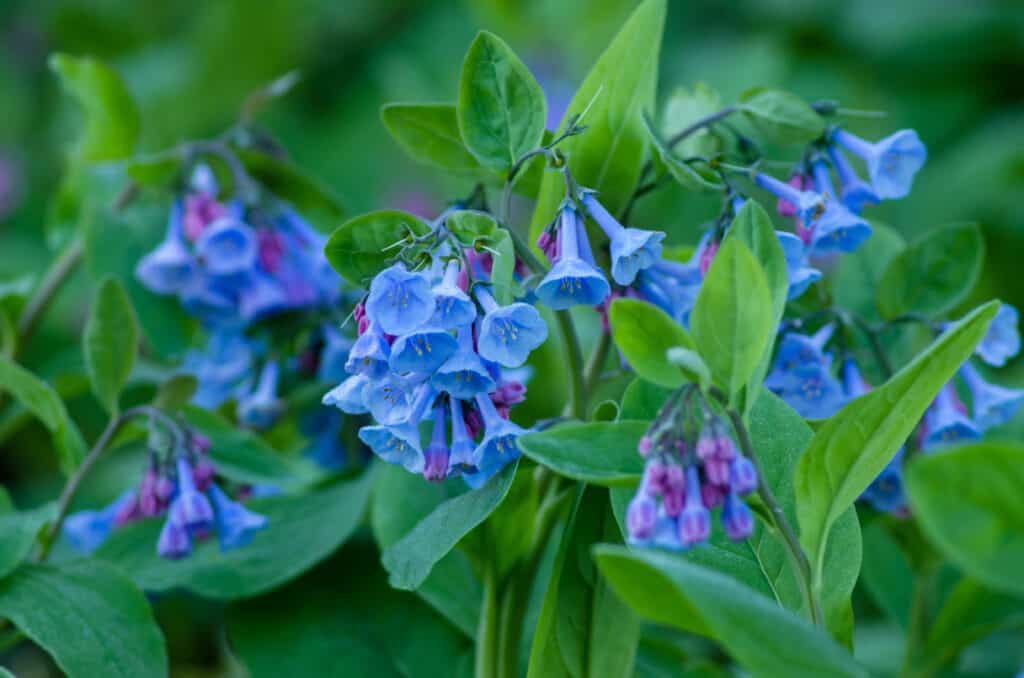
Virginia bluebells may have blue, purple, white, or pink flowers.
©iStock.com/Joshua Moore
2. Peonies
Peonies are beautiful flowers to include in your garden. They’re very easy to grow and as long as you follow a few rules, you’re sure to have gorgeous blooms during summer. All peonies bloom in summer, but you can get early, mid, or late-blooming varieties that differ by a month or so. They’re perennials, so once they get established they’ll continue blooming year after year.
You can plant peonies during early spring throughout early summer for the best chance of blooms. They’re relatively frost-tolerant, so you can plant them as early as April. Something important to note about peonies is that they may not produce blooms if you plant them too late, so make sure they’re in the ground by the end of August at the very latest. Peonies grow best in loose, well-drained soil and full sun.
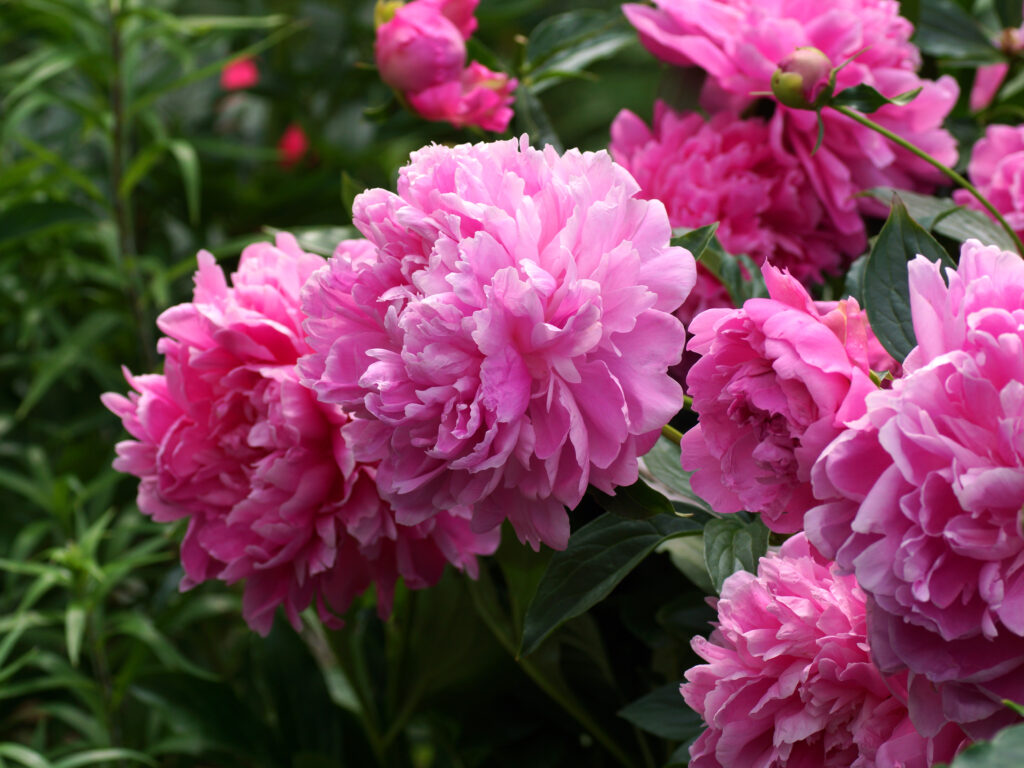
You can find many different shapes, colors, and sizes of peonies.
©Natali22206/Shutterstock.com
3. Zinnias
The best thing about zinnias is the options because this flower comes in so many colors, shapes, and sizes! They’re annuals, so they bloom for one season and won’t come back the next year. However, the season of beautiful blooms is well worth it, and you can save their seeds to plant the next year. Once the plants are in the ground, they’ll grow fast and blossom up until the first frost of fall.
Zinnias don’t like cold weather or soil, so they can go in the ground after the soil is nice and warm which is usually around two months after the last spring frost. You can estimate when the last frost will be by looking at last year’s data and then adding two months to set a planting date. They do best in well-drained soil and full sun.
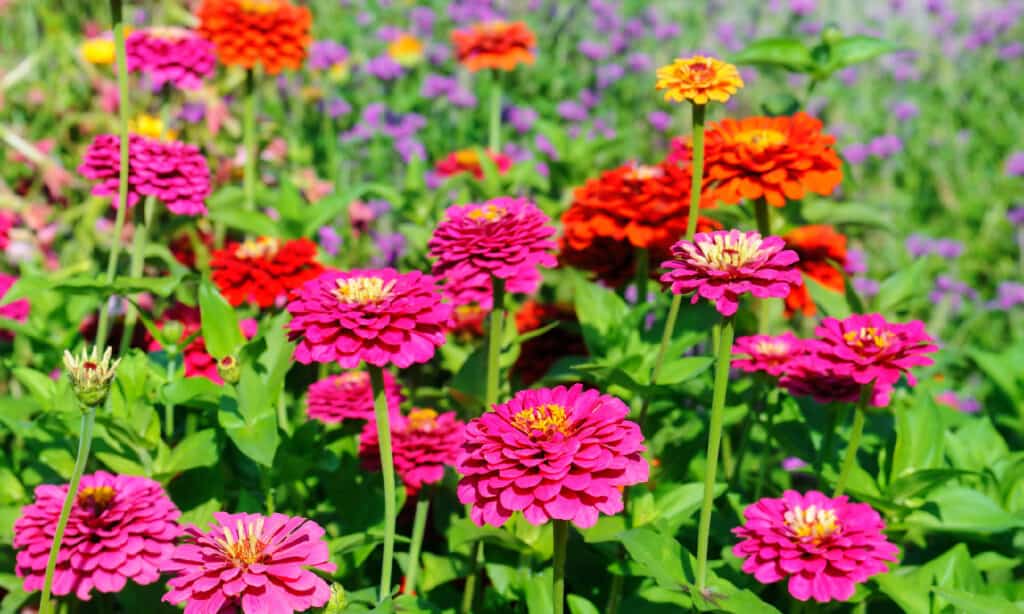
Zinnias are a beautiful addition to a Maryland garden and they attract pollinators like butterflies.
©iStock.com/AlinaMD
4. Primroses
Primroses begin blooming anywhere from early winter to late spring and will bloom for a few months. They are perennials, so once they’re established they’ll bloom for years to come. You can find yellow, white, red, pink, purple, and many other colors of primroses.
You can plant primroses anywhere from March through September, but it’s best to plant them earlier. If you wait too long, you may not be able to survive the winter. They grow best in partial to full shade and moist, well-drained soil.
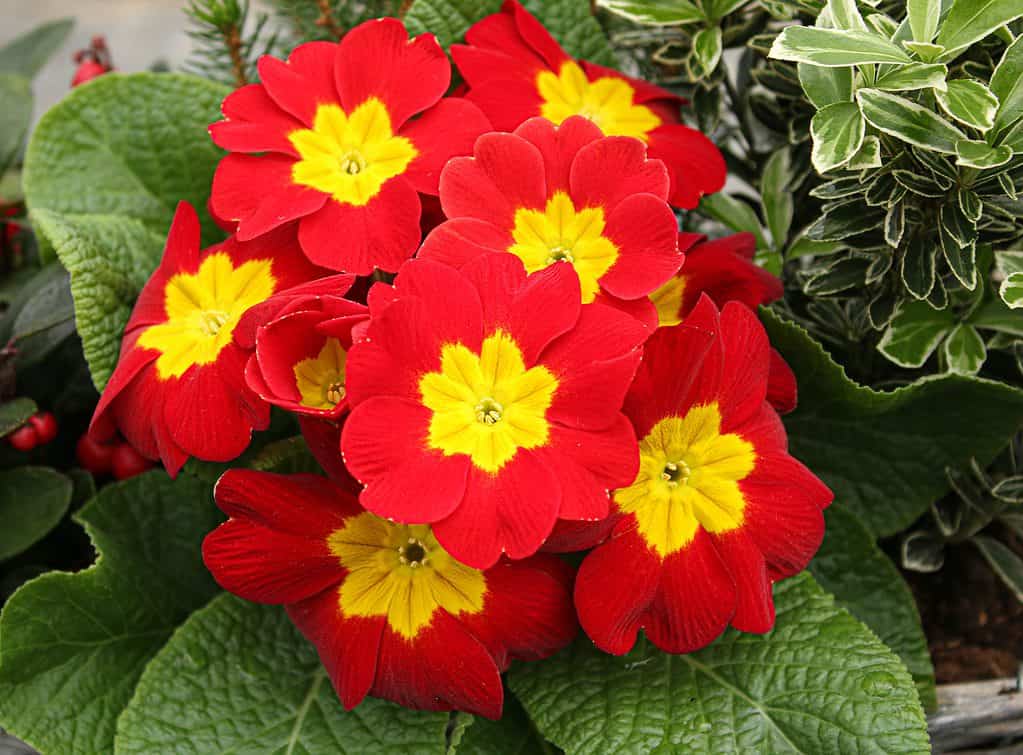
Primroses have unique star-shaped inner petals that appear like a bloom inside of a bloom.
©iStock.com/Wirestock
5. Lilacs
Lilacs are some of the most attractive flowers, named after one of the many shades that they come in. They’re versatile — you can get lilac, white, purple, pink, and red lilacs. They’re also pretty easy to grow as long as you can meet their few growing requirements. They usually bloom in mid to late spring.
Lilacs should be planted during the late fall before the first freeze. They grow best in full sun but can tolerate partial shade as long as they receive sun for over half the day. Lilacs require rich, well-drained soil and plenty of space to grow.
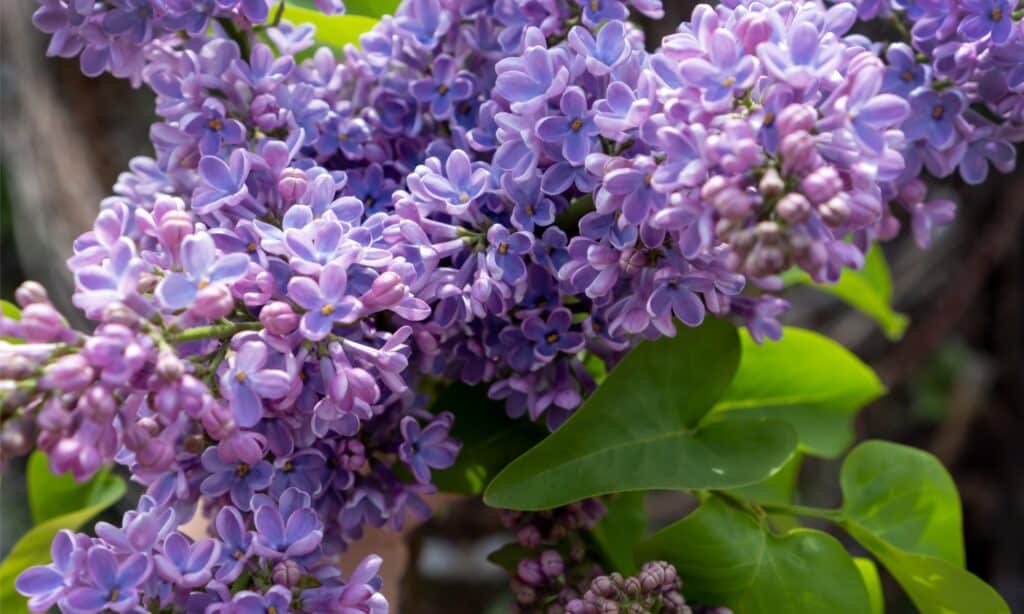
Lilacs produce blooms for a short time in the spring and are best planted in the late fall.
©iStock.com/Diana Ibrasheva
6. Black-Eyed Susans
Black-eyed Susans are a great pick for your garden because they’re the state flower of Maryland! They’re not native to the state, but they grow as wildflowers and are such a favorite of residents that they were made state flower in 1918. The flowers are a relative of sunflowers and can grow almost as tall, reaching 3 feet at their full height. They bloom from June to October so they can add color to your garden for a while. Black-eyed Susans are favored by pollinators and attract many types of butterflies and bees.
You should plant black-eyed Susans during spring — anytime March through May is ideal for planting. If you get them in the ground soon enough, they can produce blooms the same year they’re planted. Plant your black-eyed Susans in moist, well-drained soil and full sun.

Black-eyed Susans are a relative of sunflowers and bear an obvious resemblance.
©LauraTabor/iStock via Getty Images
7. Purple Coneflowers
Purple coneflowers are such unique plants because of their cone-shaped blooms and bright purple petals. They grow wild in much of Maryland because they’re native to the state, and you can find them in fields and prairies. Purple coneflowers make a great addition to gardens because they attract pollinators and they can be used in the kitchen. They usually bloom from June to July. Another word for purple coneflowers is echinacea, and they’re used as a type of herbal tea. You can use every part of the plant for tea including the flowers!
Purple coneflowers grow best in well-draining soil and full sun. However, the plants are fairly drought-tolerant once established. Coneflowers are perennial shrubs that will return year after year.
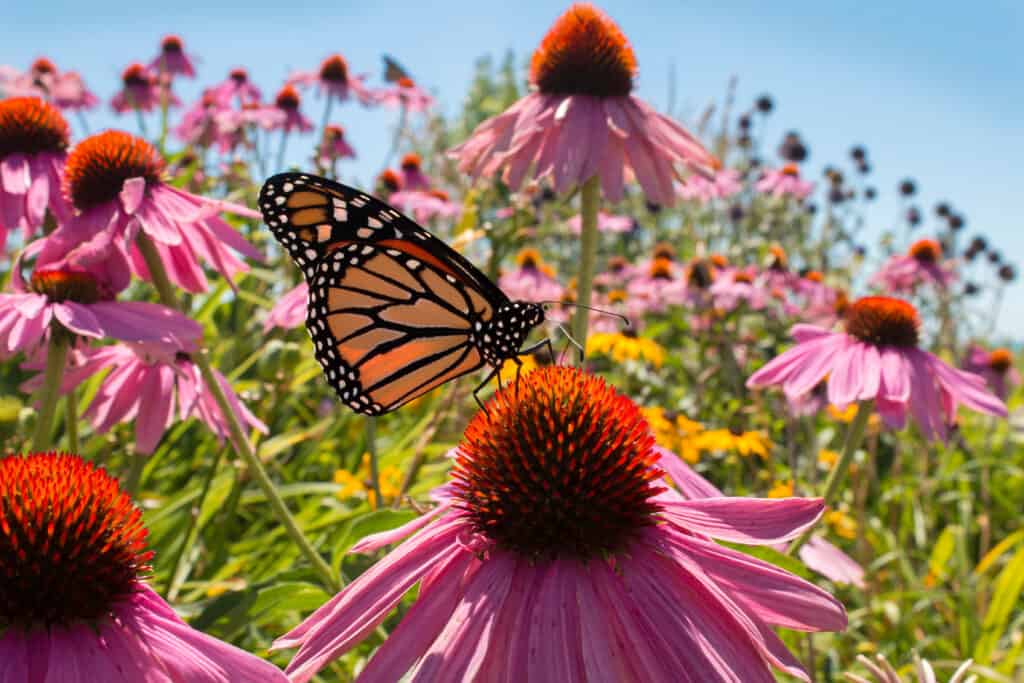
Their cone-shaped blossom is a favorite of many pollinators, including butterflies!
©Media Marketing/Shutterstock.com
8. Sunflowers
There’s something undeniably happy about sunflowers that makes them the perfect flower for your Maryland garden. Maybe that’s because they bring a bit of sunshine with every blossom! Sunflowers are a great choice because they’re pretty easy to grow, are a favorite of pollinators, and provide food for birds and small animals. They grow best in the warm months and will usually bloom July through August.
Sunflowers should be planted in late April or early May after the last frost. They’re not very tolerant of cold weather so it’s important to make sure it will stay warm after the sunflowers are planted. They grow best in moist, well-drained soil and full sun.
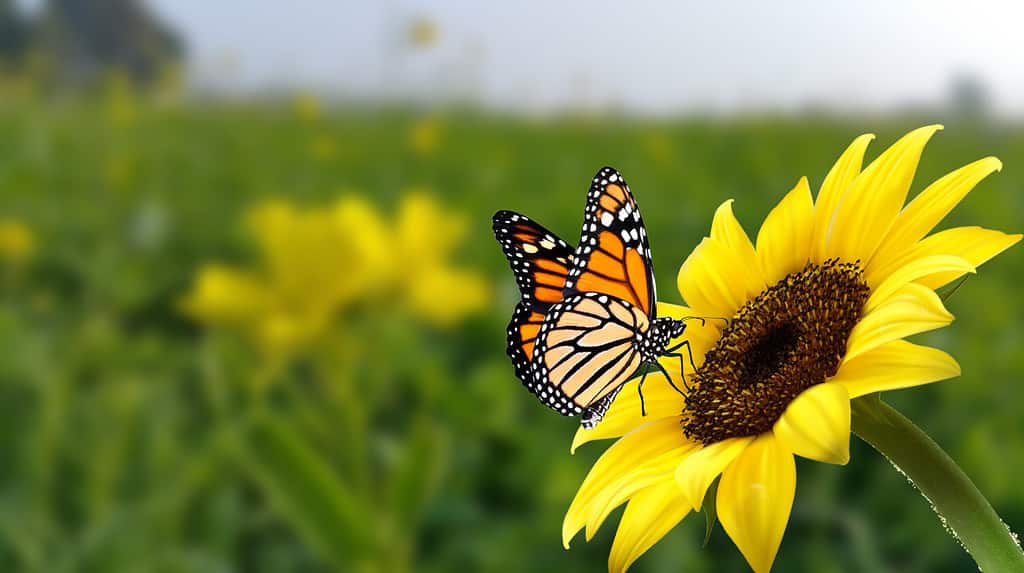
Sunflowers add joy to every garden by providing for local insects, animals, and humans!
©Candy_Plus/Shutterstock.com
9. Lantana
Growing lantana in Maryland is a bit different than growing it in other parts of the U.S. In the tropics and some southern states, lantana is a perennial. However, lantana is not cold-tolerant at all, so the frost makes lantana grow like an annual in Maryland. Despite the fact that you’ll only get one year of blooms out of lantana, they’re still a great addition to your garden. Lantana usually blooms during the summer, sometimes for two to three months or more.
These flowers should be planted in a bright location in well-drained soil. Aside from that, lantana doesn’t have a lot of requirements. They’re pretty drought-tolerant and seem to be forgiving of many soil conditions.

Lantana flowers come in almost every color you could wish for!
©Barbara Ash/Shutterstock.com
The Best Flowers To Plant in Maryland
| # | Flower | Best Place |
|---|---|---|
| 1 | Virginia Bluebells | Rich, moist soil and partial to full sun |
| 2 | Peonies | Loose, well-drained soil and full sun |
| 3 | Zinnias | Well-drained soil and full sun |
| 4 | Primroses | Well-drained soil and full shade |
| 5 | Lilacs | Rich, well-drained soil and full sun |
| 6 | Black-Eyed Susans | Moist, well-drained soil and full sun |
| 7 | Coneflowers | Well-drained soil and full sun |
| 8 | Sunflowers | Moist, well-drained soil and full sun |
| 9 | Lantana | Well-drained soil and full sun |
The photo featured at the top of this post is © Melica/Shutterstock.com
Thank you for reading! Have some feedback for us? Contact the AZ Animals editorial team.







